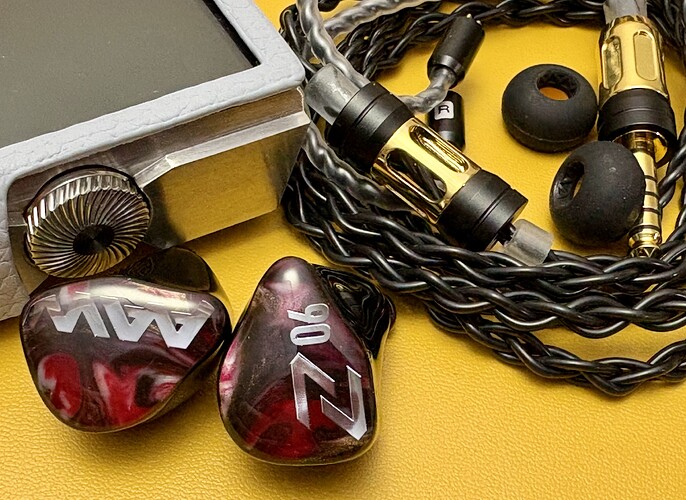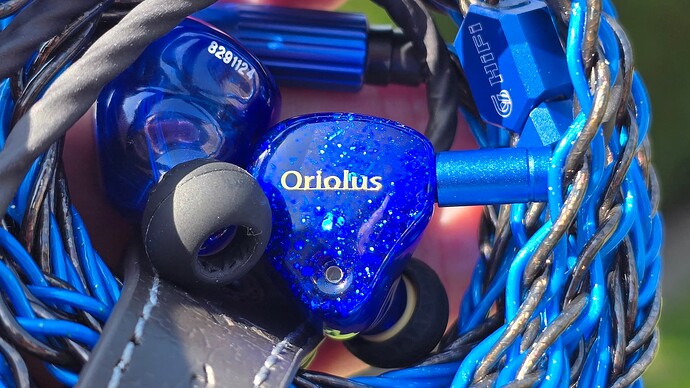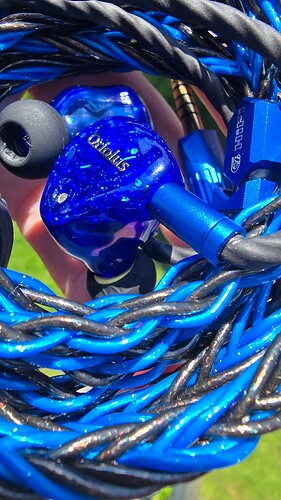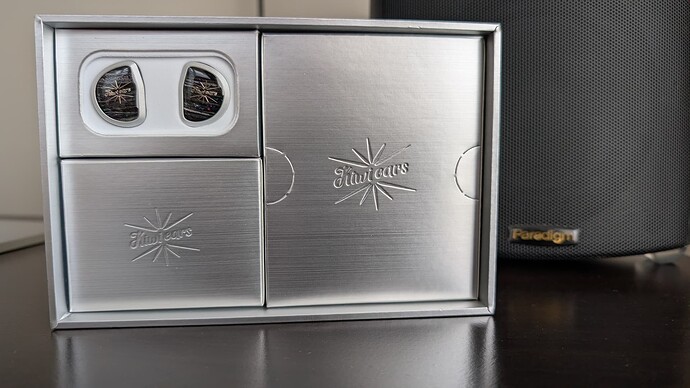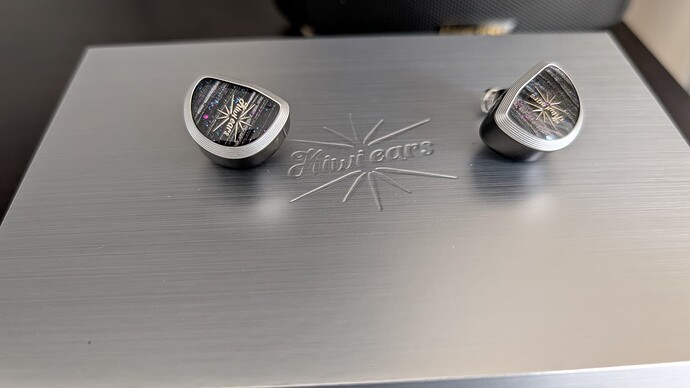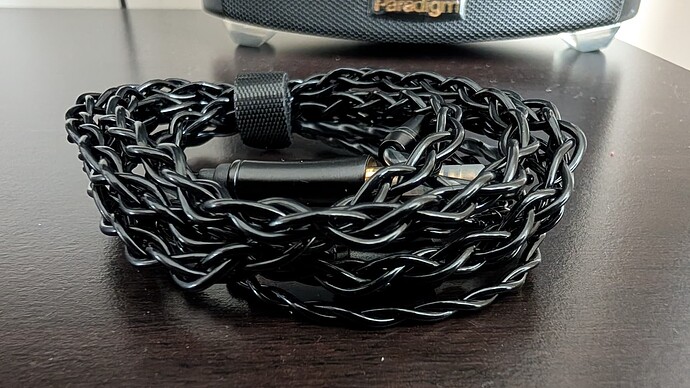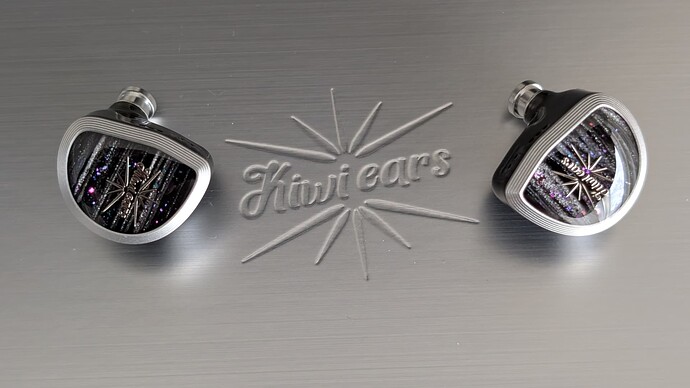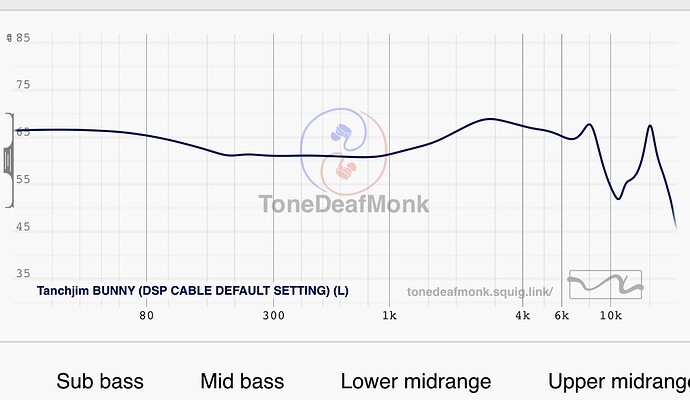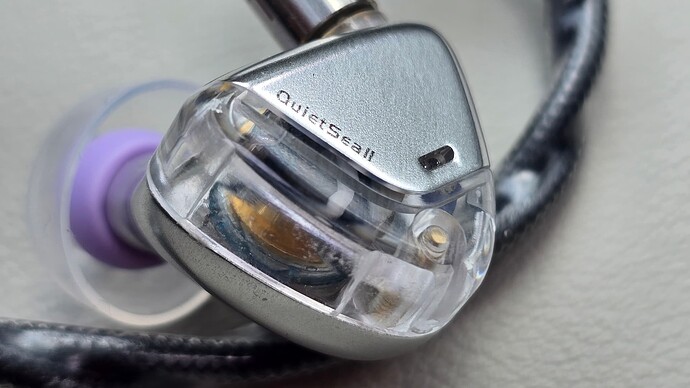Advanced AcousticWerkes Z06
6 Driver Hybrid IEM $343.00 usd
- 6mm dual isobaric woofer
- 4 nondescript BA Drivers.
- Crossover: 3 Way
- Sensitivity: 110dB
- Impedance: 12Ohm
- Frequency: 10Hz - 40kHz
- Distortion<=0.5%
![]() Preamble:
Preamble:
The AWW Z06 was purchased at full price.
It will tour with the Canuck Audioholics.
Tone Deaf Monk, Bennet Kelly, and myself.
There is no obligation on any of us to review the Z06, but hopefully there will be a couple more independent perspectives on the AWW Z06 in the coming weeks.
AWW, Advanced AcousticWerkes, is a Singapore based audio company building quality Universal and Custom IEM’s for musicians, studio techs, and audiophiles.
They don’t appear to have much presence in North America or Europe, but do appear to be well established throughout Asia.
The intrigue of being a somewhat “unknown” brand outside of Asia was one factor that piqued the interest of the Canuck Audioholics that eventually led us on a journey to experience some of what they offered.
Our first taste was with the AWW Z02, our reviews are complete and posted here and, for Tone Deaf Monk, on YouTube.
There will be references to the Z02 throughout this review of the Z06.
![]() Packaging.
Packaging.
Packaging is standard, a box, foam inserts that protect the contents well, a decent pocketable carry case, a very nice cable, and a generous selection of ear tips.
Accessories and warranty:
(cut and paste from website)
- 48" Null Audio Epsilon UPOCC Copper Detachable Cable
- AAW Carrying Case
- 3 Pairs SpinFit Silicone Tip(S/M/L)*
- 3 Pairs AAW Short Stem Foam Tips(S/M/L)*
- 6 Pairs AAW Assorted Silicone Tips (S/M/LX2)*
- 1 Year Limited Warranty
![]() Pros and Cons:
Pros and Cons:
![]() 3D printed full resin shells feature an acoustic chamber instead of tubes, are on the small to mid side, and have a mid to deep nozzle insertion depth. Fit and finish is excellent, and the red faceplates feature the AWW moniker and Z06 model designation in silver.
3D printed full resin shells feature an acoustic chamber instead of tubes, are on the small to mid side, and have a mid to deep nozzle insertion depth. Fit and finish is excellent, and the red faceplates feature the AWW moniker and Z06 model designation in silver.
![]() The Null Audio Epsilon pure copper cable is a very nice offering. Quality hardware, supple wire, good supportive ear hooks, chin toggle, 2 pin connectors, 3.5 or 4.4mm termination selectable at checkout.
The Null Audio Epsilon pure copper cable is a very nice offering. Quality hardware, supple wire, good supportive ear hooks, chin toggle, 2 pin connectors, 3.5 or 4.4mm termination selectable at checkout.
This one is 4.4mm.
![]() The dual 6mm dynamic driver isobaric chamber features a venting system to balance in ear pressure.
The dual 6mm dynamic driver isobaric chamber features a venting system to balance in ear pressure.
I don’t experience any pressure build up, but, I typically don’t on most IEM, so I’m not the best judge of its effectiveness.
![]()
![]() Manufacture and model of the 4 BA drivers is not specified, but they sound good.
Manufacture and model of the 4 BA drivers is not specified, but they sound good.
Neither is their designation specified, I’m going with the assumption 2 for mids, 2 for highs.
![]() The dual DD’s also have no specifications for diaphragm type, magnets, etc.
The dual DD’s also have no specifications for diaphragm type, magnets, etc.
They do serve up excellent bass.
![]() Mids and highs are detailed and accurate.
Mids and highs are detailed and accurate.
![]() Staging is very good.
Staging is very good.
![]() While not as source device sensitive/dependent as the Z02, the Z06 is still source responsive. Source device selection MAY be the difference between a good pairing and a great pairing for some.
While not as source device sensitive/dependent as the Z02, the Z06 is still source responsive. Source device selection MAY be the difference between a good pairing and a great pairing for some.
![]() My Journey:
My Journey:
As mentioned above I found source rolling and selection with the Z06 a worthwhile endeavour.
The very mids energetic Z02 was quite source dependent, the Z06 is less so.
On Z02 I found the relaxed/neutral mids presentation of the AK Kann Max the perfect pairing. It reduced the energy in the mids and highs enough to pretty much eliminate harshness and planar sheen.
On the Z06 however, the Kann Max gives the bass a “woompfy” some what muddy tone that overshadows the mids and truncated the precision of stage imaging.
My other DAPs AK SP2000T on Op amp mode, Hiby R8ii, and R4, and iBasso DX320 all sounded good in their own right.
AK HC4 dongle on iPhone 16 I found was very good as well, however, on certain tracks it could push the Z06 close to being too energetic in the mids and highs.
The brighter and resolving iBasso DX340, somewhat surprisingly to me, ended up being the best pairing with Z06 for my preferences.
![]() Equipment:
Equipment:
![]() Advanced AcousticWerkes Z06 IEM, aged 100+ hours.
Advanced AcousticWerkes Z06 IEM, aged 100+ hours.
![]() iBasso DX340 DAP, Amp 15 card, low DAC gain, Med AMP gain. 4.4mm out.
iBasso DX340 DAP, Amp 15 card, low DAC gain, Med AMP gain. 4.4mm out.
![]() Stock Null Audio pure copper cable terminated 4.4mm.
Stock Null Audio pure copper cable terminated 4.4mm.
![]() Eletech Baroque extra wide bore ear tips.
Eletech Baroque extra wide bore ear tips.
![]() Sound:
Sound:
The two 6mm isobaric mounted dynamic drivers deliver a well mannered and agile bass that delivers what the recorded source asks.
There is a slight mid bass over sub bass lift that keeps the sub bass lower in the head stage. On heavy sub bass tracks there is plenty of rich deep rumble that pulls low, but it stays mostly at or below the ears in the head space, keeping it from overwhelming the entire stage.
The slight mid bass lift is just that, slight. It is present, gives kick and tom drums nice impact, and carries into the mids enough to provide some warmth and tonality without being overbearing.
Mids and vocals exhibit excellent technicalities, and, both macro and micro details.
Wide, spacious staging allows for excellent imaging, Instruments and vocals are clean, clear and tonally accurate.
These are mids that have a generous amount of energy, they will engage the listener, hold your attention, and make your toes tap.
The same analogy I used for the Z02 applies here as well; don’t be surprised if after a session with the Z06, you feel motivated to head to a nightclub and keep the party going.
I’m somewhat mids sensitive, but, only when I get the volume up close to unhealthy levels do I find the mids can border on harsh or sibilant. Even then only on a very few select tracks.
The highs and ultra highs are very well done.
Very good micro details, air, and sparkle. I don’t find anything missing, but the very top end does ease off a touch.
Violins for example, soar high into the head space, but never get screechy. Cymbals and high hats as well, crisp stick strikes and nice sizzle without excess.
I find this welcome, if the high end was on the hot side, it would tip the balance with the energetic mids.
Head stage is extremely good IMHO.
It’s wide, outside the ears, and, deep and tall. Front to rear depth not outstanding, but above average.
The spaciousness and pin point positioning of the stage results in precision imaging and layering.
There is a caveat: the staging first caught my attention while the Z06 were on the burn in rig (my headphone amp). A powerful source capable of up to 7 watts per side (Cayin iHA-6 if you’re curious).
It is still excellent on my DAPs, but, the iBasso DX340 DAP features a 12v DC power inlet that puts the DAC into super gain mode. Which boost the staging effect as well.
So, source devices can have an impact on the stage presentation.
I’m confident most source devices will deliver great staging on this IEM, but it seems to respond best to higher current sources.
![]() Summary:
Summary:
I have only heard the Z02 and Z06 from AWW so I can’t really claim to know their “house” sound.
But both these IEM have well managed bass, a mids focus that is very prominent with good energy and excellent clarity and detail, highs that are bright and airy with good sparkle.
The two driver Z02 (DD and Planar) is less refined, more energetic in the mids, and, occasionally. exhibits planar sheen that can have an unnatural tonality.
I found it more source device dependent, but found it to be an enjoyable IEM when paired with the mids neutral/relaxed Astell & Kern Kann Max.
The 6 driver Z06 (dual isobaric DD, 4 BA) is more refined than Z02.
The dual 6mm isobaric DD’s serve up a well mannered but prominent bass that follows the recorded source and adds additional warmth to the focused and energetic mids.
The mids are very detailed and energetic without being overbearing, harsh or sibilant.
Vocals are clear and natural on both male and female vocalists.
Highs are detailed with very good air and sparkle
Staging fills the head space and imaging and layering is precise and accurate.
I found the Z06 work well with all genre in my library thanks to its agility.
But it really brings classical/symphonic to life.
Who is the Z06 for?
It has ample bass when called upon, but bass is not the focus, so dedicated bass prominent enthusiasts may find it lacking.
Mids and vocals are forward, elevated, clear, energetic and detailed, so mid centric enthusiasts would likely find the Z06 enjoyable.
Highs have good micro detail, and adequate air and sparkle, but again, not the focus. So dedicated treble enthusiasts may find Z06 a bit shy.
However some treble fans may find the detail and clarity in the mids may also be enough to compensate.
Is it worth the mid $300 usd ask.
In my opinion yes, if the tuning suits your preference.
I believe it will compete well against other offerings in this price range.
![]() My music sources:
My music sources:
Qobuz, and, FLAC and DSD files stored on the SD cards of my daps.
My music genre are primarily Rock, Blues, Jazz, Symphonic, Country, Rap, R&B, Pop, Electronic.
Enjoy your music. ![]()
